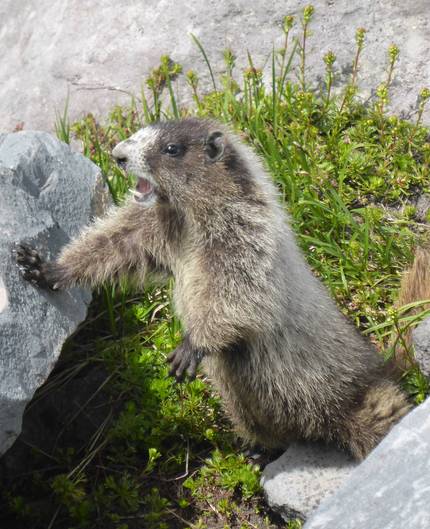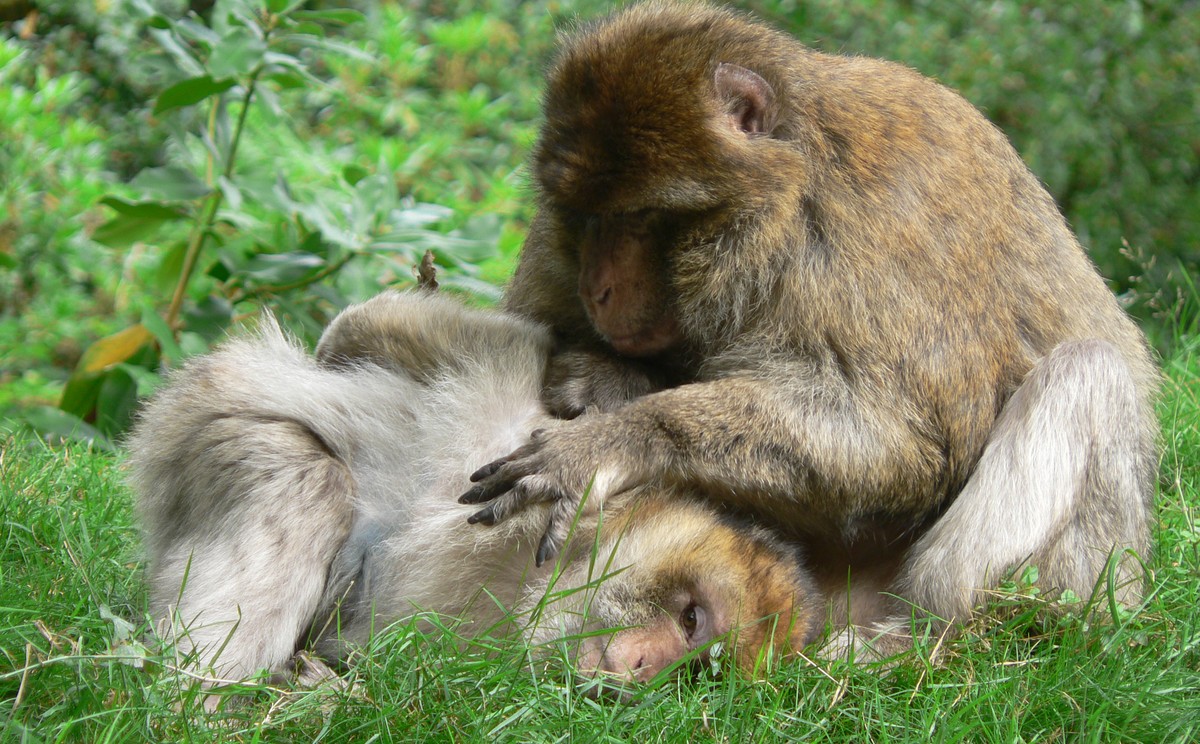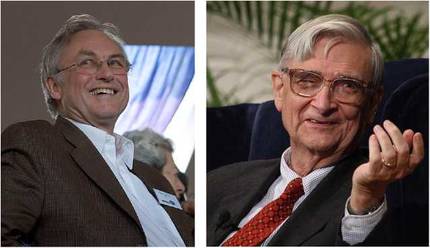Why are we good?
_article_big.jpg)
When we talk about the law of the jungle, we come to mind the cruelty of nature, which is that the strong crushes mercilessly. However, studies conducted in recent decades have shown that altruistic behaviors are more widespread in nature than previously thought, both among individuals of the same species and among different species. But is that not against natural selection? If, throughout evolution, the most suitable genes have been selected to survive and reproduce, how have so far come the genes that push a being to help others? The researchers have proposed several explanations about the origin of altruism and have been harsh debates. These divergences also reached the newspapers, such as The Guardian, where Edward Wilson, from Harvard, made one of the greatest disdains that can be made among scientists, Richard Dawkins, of Cambridge, in calling him a journalist. Let's look at what this controversy is and, above all, try to answer the title question.
Is altruism rare in nature?
When a marmot sees a hawk in the sky, the best thing to save his life is to hide it as quickly and quietly as possible. Instead, he will begin shouting to warn the group of species present in the area. The bats of the Desmonditinae family feed on the blood of other animals and if they stay two days without eating, they risk dying. Within these vampires bats, it is common for an individual who has not obtained enough blood at one night to be fed, resurfaced, by another of the group. And to choose one of the many examples of insects: in some species of ants, the welded ants of a colony will give life by defending the nest. The list of these types of altruistic behaviors is very long and each year new cases are found.

It is not immediate that these behaviors are explained on the basis of Darwin's theory of evolution, although it is assumed that nothing makes sense in biology if it is not in the light of the theory of evolution, as researcher Dobzhansky said. In short, this theory tells us that natural selection influences mutations that occur in organisms, selecting those that are suitable to survive and reproduce and discarding those that are inadequate. Thus, it seems that the behaviors of the marmota, bats or ants that we have mentioned should disappear, since the marmota that is hidden in silence has more chances of survival, the bat that reserves all the food obtained or the ant that leaves before an attack.
Hidden selfishness?
XX. At the end of the 20th century the book The Selfish Gene by Richard Dawkins (Gen egoísta, 1976) had great influence. He said that organisms are like robots programmed by genes and that the object of natural selection is the gene, not the organism. In describing the gene as selfish, Dawkins means that between the different genes there is a certain struggle not to disappear from one generation to another. In general, the genes that favor the survival and proliferation of the governing organism will be the ones that are most likely not to disappear. To explain the altruism that is observed in nature from this way of understanding evolution, you can use the theory of the selection of relatives of Hamilton or the inclusive adjustment. Following the example of the marmot, it is true that an individual endangers his survival when he screams at a predator, but at the same time helps the members around him. These members, probably familiar, will have many genes in the bathroom, and it is a certain probability of sharing the gene that causes altruistic behavior: 50% for parents and siblings, 25% for cousins, etc. In this way, the selfish gene that causes the alarm cry of the tidal wave is guaranteeing the survival of the copies of the same gene that will be part of the relatives of this type of tides. British biologist Haldane explained it perfectly when asked if he would lead a life for a brother who was about to drown: “No, but it would save two brothers or eight cousins.” Therefore, altruistic behaviors would result from a certain selfishness of genes and have been maintained because they have guaranteed the survival of some genes.
Numerous inclusive adjustment tests have been presented. For example, the case of squirrels that produce cries similar to the marmots mentioned above: Paul Sherman, after three years of group study, concluded that survivors of more relatives more often put their lives in danger to warn others.
I will help you because you also help me
Inclusive adjustment may be appropriate to explain altruism between relatives or, at least, organisms with the same genes. But in nature, altruism also occurs outside of kinship relationships. For example, in the case of bats vampires it is not clear that family members are helped more than the rest of the group. Therefore, an additional explanation of the origin of altruism is needed, which could be the so-called mutual altruism (proposed in 1971 by Robert Trrivers of Harvard University). According to this model, natural selection can adopt certain altruistic behaviors, which in the short term seem harmful to the altruistic organism but can benefit in the long term. In the case of bats, the grain that has been saturated in one day can suffer a small damage, delivering part of the ingested to a hunger companion. On the contrary, if someone else does not get food, it can be of vital importance to donate some blood to the grain that helped that day. This type of altruism can also occur among individuals of different species. For example, birds of the African species Indicator indicator indicate to humans where hives are located, and they use to eat larvae and waxes that after having received the honey the hive is open.

Team strength
Darwin himself in his book The Descent of Man (1871) mentioned that if members of a tribe had high levels of patriotism, loyalty, obedience, courage and sympathy, it would have a competitive advantage over other tribes and therefore the number of good human beings would increase from generation to generation. That is, he proposed that natural selection could also work collectively. However, this approach lost strength in the 20th century. In the second half of the 20th century, explanations related to the selfish gene were sufficient. With the turn of the century, however, it has returned strongly as a component of multilevel selection. This theory argues that natural selection can occur at different organizational levels: genes, cells, organisms, groups or species.

Edward O of Harvard University is one of the best-known advocates of this vision. Biologist Wilson. In his book The Social Conquest of Earth, 2012, he explains that the most successful species on earth have been social insects and man, who have reached the highest level of organization in society. In the case of insect species, they have come to this situation by selecting queens. In the case of human beings, the main evolutionary force would be multilevel selection. According to Wilson, on an individual level selfish behaviors have the advantage that those who keep food have more chances of survival than those who share everything. On a group level, on the contrary, altruism is more beneficial, since a group of altruistic individuals is more powerful than that of the selfish. And the fact that these two opposing forces jointly guide human evolution would explain the characteristic of being selfish and altruistic. This book, together with an article previously published with the same thesis in the journal Nature, sparked a debate in which people who over the years have worked around the selection of relatives and mutual altruism stated that their work was despised in some way. The most demanding critic was the aforementioned Richard Dawkins, who came to say about Wilson's book: “This book is not exclusive without more. Later, when Wilson was asked about this issue, he said that he only discussed it with scientists, not with Dawkins, because in his opinion Dawkins was a journalist and journalists only tell what scientists had found. That meant that Dawkins had long ago not published an original research and wrote articles and books for the general public.
Beyond this personal polemic, there is no consensus among scientists to decide what is the most important evolutionary process that influences the origin of altruism. Proponents of the multi-level election do not deny that an inclusive adjustment and mutual altruism may occur, but they say that they do not correspond to many observations and that there is little favorable evidence. On the contrary, supporters of these two processes claim that the conditions for group selection to occur are very few.
Time will tell what is the best explanation of the origin of altruism. Researchers will continue to make observations on nature, applying mathematical models to explain what has been seen and transmitting conclusions. If theories so far do not yield good results, new ones will emerge and, along the way, we will not fail to learn. Meanwhile, let's remain good.
Bibliography
DAWKINS, R. (1976): The Selfish Gene.
ELOSEGI, A. (1995): Sex in the evolutionary game Motor Strategies of Evolution - Ugal.
PEREZ, J.I. (2015): "La unidad de seleccion en la evolucion y el origen del altruismo", Cuaderno de Cultura Científica (culturacientifica.com).
WILSON, S.L. (2012): The Social Conquest of Earth.





